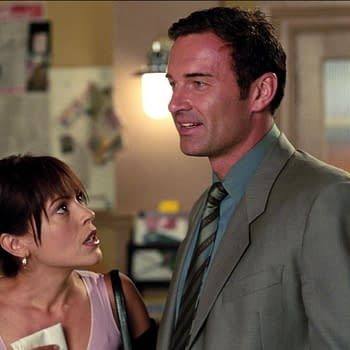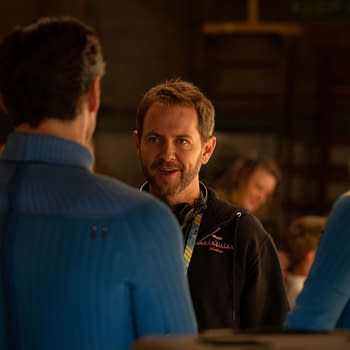Posted in: Movies | Tagged: dean israelite, entertainment, film, Jonny Weston, Project Almanac, Quinn Goldberg
Project Almanac And Discombobulated Time-Traveling Hijinks
By Octavio Karbank

When you have a movie about time travel, you better to be sure to not leave any gaping plot holes. Of course even the best time travel flicks like Back to the Future have the occasional inconsistency, but there's a difference between minor discrepancies and gaping plot holes the size of Mt. Everest when the movie fails to follow its own rules. For the casual viewer, or anyone who doesn't pay the slightest attention to detail, Project Almanac tells the tale of a group of teens that discover a time machine and go on to try and exploit time travel for their personal gain. Things don't go as planned. Big surprise.
Now we could sit here and talk about time travel theories all day long, and lots of people do, but for our purposes, let's look at those theories as applied to the film. Since there are tons of notions, we'll examine three of the most popular. To further illustrate the point, here's a chart you may or may not have seen:

Another instance is when David time travels with friends to Lollapalooza and tries, unsuccessfully, to woo his love interest. When they return to the present, David tries again, returning to the past, and runs past his friends from when they originally time travelled. This time the wooing is successful. But where's the David from their first time there? It's like he never existed! At this point, the timelines start diverging and varying realities form as David splinters time and ends up having to reboot the timestream in a very Doctor Who manner.
To get a better sense of the time travel theories that roam around freely in Project Almanac in a way akin to free roaming velociraptors of a certain park, check out the video below. Done by the brilliant folks of Vsauce3 on Youtube, they have time travel figured out. Insomuch as time travel can be figured out.
[youtube]https://www.youtube.com/watch?v=AOwRb584r1c[/youtube]
I'm not going to nitpick every little problem, as we'd be here forever, but let it be said, there are issues aplenty. The film itself is something of a lackluster experience, if only because, like in horror movies, you want to scream at the ditsy characters to not go and do something stupid. The "found footage" technique gets old very fast and doesn't work in moments, forcing the audience out of their suspension of disbelief. When our protagonists "conveniently" place the camera in various positions to capture certain angles that no one, other than an actual filmmaker, would ever care about, or when they catch every single conversation with the subjects of the footage being none the wiser, the result is a jarring one.
None of this is to say you should avoid Project Almanac altogether, as there a couple clever bits scattered throughout. I also strongly feel that anything time travel-related should be supported. Still, waiting until it comes out on Netflix wouldn't be an awful idea either. Who knows, I'm sure by then someone will have come up with a time-traveling themed drinking game to enhance the timey wimey experience that is Project Almanac.
Octavio Karbank is a writer and bona fide Whovian. Living in Massachusetts, you can find him on Twitter @TymeHunter and his blog www.cozmicventures.com















